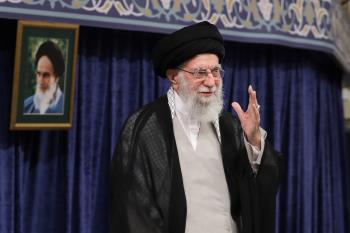Alwaght- The aftershocks of the Gaza war keep grabbing the calm from the occupied Palestinian territories. Tel Aviv's efforts to reduce the consequences of defeat in the war against Hamas by taking actions against the ceasefire conditions are ongoing. Continuing the policy of pressure on the Palestinians in the West Bank has produced no results. Besides, the Gaza-based Hamas has embraced an offensive approach, pushing back against the Israelis and putting strains on the largely-shaky Netanyahu cabinet.
Meanwhile, while the Tel Aviv set release of its soldiers held by Hamas as the precondition to allowing the material and aids in Gaza for reconstruction of the largely damaged infrastructure in the Palestinian enclave, Al-Qassam Brigades, military wing of Hamas, published on Monday a footage of two Israeli soldiers in its captivity, ending speculations that they were killed in the war. One of the captives was identified as Gilad Shalit.
Undoubtedly, the release of this file at this time, for the first time in years after the capture of these soldiers, was planned for important goals and can greatly affect the equations in the occupied territories as well as the developments in Palestine after the 12-day war.
Psychological war after conflict: Striking the last nail on Netanyahu's coffin
The first goal behind releasing the unprecedented audio and video files of the Israeli captives has to do with the psychological warfare and media propaganda that are taking place in the aftermath of the military war. Understanding the picture of the political crisis within the occupied territories, the resistance groups are seeking to raise awareness about the genuine result of the war amid an Israeli campaign of distortion of the truth.
Undoubtedly, Netanyahu's efforts to disrupt the opposition coalition's formation of a government will be ineffective, and internal feud between supporters and opponents of the coalition will intensify after his ouster. The result of this situation will be more political and social turmoil inside occupied territories and public frustration with the outcome of the Israeli army's seemingly invincible confrontation with the resistance. The decline in public confidence in the military is another consequence of Hamas psychological operations against Tel Aviv.
Establishing the victory by release of Palestinian prisoners
Yet another driver behind the files publishing was foiling Israeli regime's plan to wrist concessions from Hamas in the form of release of Israeli soldiers held by the Palestinian movement. The release of prisoners of war held by Hamas has not only been one of the most pressing demands of Israeli public, but its importance has even prompted the Netanyahu cabinet to plan several operations to abduct prisoners in Gaza or force the resistance to release them. The release of the files will once again provoke the public against the cabinet's inaction for the release of prisoners, and this pressure will act as a support for advancing the plan to free all Palestinian prisoners in the Israeli prisons in return for release of Israeli captives. Therefore, in order to free themselves from the pressure of public opinion, the Israeli leaders must either accept this deal, which is heavier than a military defeat, or withdraw the demand of the release of the four Israeli prisoners as a condition for issuing permission for humanitarian aid entry to Gaza.
Reminding Tel Aviv of resistance’s intelligence power
The files have a reality to tell: Hamas secured an intelligence victory, too, over the Israeli spying apparatus. It is an intelligence fiasco that in a very small area like Gaza the Israeli intelligence agency, assisted by Fatah, rival of Hamas, failed to identify the whereabouts of the Israeli soldiers and even had no idea if they were dead or alive before the files were published.
Immediately after the release of the files, the PM's office reacted by issuing a statement, calling it "deceptive and worthless" and claiming that it was well aware of the situation of its soldiers.
During the recent war and in the days that followed it, the Israeli intelligence loss was a constant topic of analyses inside the Israeli regime and outside it. Netanyahu has not answered the question as how Hamas, under siege for 14 years, managed to procure or produce pinpoint-accuracy missiles with a range of 250 kilometers, that cover whole occupied territories. The Israeli PM also left unanswered questions about how Hamas defense and military infrastructure did not suffer a major damage notwithstanding Israel strikes on 250 Gaza spots stated in the Israeli must-hit target list.



























